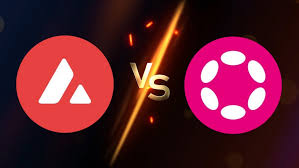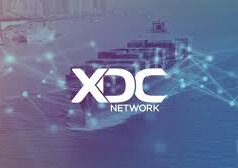In the layered landscape of modern blockchain, Avalanche and Polkadot stand as two powerful, yet philosophically distinct, platforms. Whether you’re aiming for blazing-fast throughput or customizable interoperability, understanding how these giants align with your developer vision is crucial.
1. Philosophical Foundations: Speed Meets Flexibility vs. Shared Security and Interoperability
Avalanche: Tuned for Performance and Custom Chains
Created by Emin Gün Sirer, Kevin Sekniqi, and Ted Yin, Avalanche was designed from the ground up to deliver high throughput, rapid finality, and flexible subnet creation. Its Avalanche Consensus melds classical and Nakamoto-style consensus for scalable, secure, and efficient operation.(Wikipedia, blog.moso.xyz) The network’s structure includes three interoperable blockchains—X-Chain (assets), C-Chain (smart contracts), and P-Chain (network coordination)—with custom subnets layered on top.(Wikipedia, blog.moso.xyz, wiki.polkadot.network)
Polkadot: Modular Chains with Shared Security
Founded by Gavin Wood and the Web3 Foundation, Polkadot focuses on interoperability through a relay chain plus parachains architecture. Parachains are customizable but rely on the relay chain for security, together enabling cross-chain messaging and shared trust.(Wikipedia, blog.moso.xyz, Crypto.com)
2. Consensus & Finality
| Feature | Avalanche | Polkadot |
|---|---|---|
| Consensus Mechanism | Avalanche Consensus (Snowball/Snowman DAG-based) | Nominated PoS with BABE and GRANDPA hybrid model |
| Finality | Near-instant, probabilistic, high fault tolerance | Deterministic finality via GRANDPA |
| TPS & Block Time | Up to 4,500 TPS, block time ~2s | Around 1,000 TPS, block time ~6s |
| Security Threshold | Requires ~80% malicious validators to break safety | Traditional staking model, with slashing mechanisms |
Avalanche’s Snowball or Snowman consensus achieves high throughput with low latency, using DAG ordering and subsampled voting.(wiki.polkadot.com, arXiv, blog.moso.xyz) In contrast, Polkadot adopts a hybrid model—BABE for block production, and GRANDPA for deterministic finality, with validators securing consensus collectively.(wiki.polkadot.com, Wikipedia)
3. Architecture: Subnets vs Parachains
Avalanche:
- Structured with X-, C-, and P-Chains for specific functions.(wiki.polkadot.network, blog.moso.xyz, Wikipedia)
- Subnets allow developers to create customizable, interoperable blockchains with independent rules, transaction fees, token design, and validator sets.(wiki.polkadot.network, Reddit)
Polkadot:
- Employs a relay chain + parachain model, where parachains leverage relay-chain security and communicate via protocols like XCM/XCMP.(Wikipedia, Crypto.com, Krypto Hippo)
- Shared security ensures parachains don’t need to build their own validator base, reducing complexity.(Wikipedia, Krypto Hippo)
4. Developer Tooling & Smart Contract Support
Avalanche:
- EVM-compatible C-Chain, ideal for Ethereum developers.
- Supports multiple VMs, including custom ones, and VMs in various languages.(wiki.polkadot.network, blog.moso.xyz)
Polkadot:
- Developers build using Substrate, crafting custom blockchains or parachains compiled to Wasm.
- Smart contracts reside on parachains (e.g., Moonbeam, Acala), where EVM or WASM are supported.(Wikipedia, wiki.polkadot.network, Krypto Hippo)
5. Performance, Scalability & Transaction Costs
Avalanche:
- Theoretical throughput: ~4,500 TPS, with subnet optimizations pushing >10,000 TPS.(chain.compare, tradedog.io)
- Real-world average is lower (for example, ~4 TPS per Chainspect data), yet still robust.(Crypto.com)
- The December 2024 Avalanche9000 upgrade slashed deployment costs (by over 99%) and reduced gas fees, enhancing developer appeal.(bitrue.com)
Polkadot:
- Approx 1,000 TPS, block time ~6s.(chain.compare, Crypto.com)
- Kusama (canary network) stress-tested up to 143,000 TPS in December 2024 during “The Spammening” event.(Wikipedia)
- Lower average transaction fees (~$0.088 vs Avalanche’s ~$0.12).(chain.compare, Crypto.com)
6. Governance, Tokenomics & Community Activity
Avalanche:
- Token: AVAX (capped supply of 720 million).(bitrue.com, Reddit)
- Used for fees, staking, subnet creation—burned upon usage, creating deflationary pressure.(Reddit)
- Robust DeFi ecosystem and enterprise use cases (e.g., DeFi Kingdoms, ticketing in Turkey).(Reddit, Wikipedia, blog.moso.xyz)
Polkadot:
- Token: DOT (uncapped). Used for governance, staking, parachain auctions.(bitrue.com, Wikipedia)
- Strong governance framework with Phragmen elections, evolving to OpenGov.(Wikipedia)
- Diverse parachain ecosystem: Moonbeam, Acala, and extensive interoperability tooling.(Krypto Hippo, Crypto.com)
Developer activity (GitHub commits): Polkadot (~224), Avalanche (~98) relative to other chains.(Reddit)
7. Ecosystem Highlights & Real-World Feedback
- Avalanche excels in DeFi, gaming, enterprise, and custom subnet use. As one user noted: “Low transaction costs… very-fast deterministic finality… C-Chain is EVM-compatible… high fault tolerance.”(Reddit)
- Polkadot stands strong for cross-chain interoperability, modular parachain building, and shared security across diverse projects.(Krypto Hippo, Crypto.com)
8. Developer Profiles: Which Chain Fits You?
Choose Avalanche if you:
- Prioritize ultra-fast finality, high throughput, and EVM compatibility.
- Want to deploy isolated, customizable subnets—for DeFi, gaming, or enterprise.
- Prefer familiar tooling (Solidity, MetaMask).
Choose Polkadot if you:
- Seek interoperable multi-chain projects with shared security.
- Want to build with Substrate and tailor runtime logic.
- Value robust on-chain governance and modular ecosystem growth.
Final Thoughts: Shared Goals, Different Paths
Both Avalanche and Polkadot beautifully tackle the blockchain trilemma—but do so with contrasting philosophies. Avalanche leans into performance and flexibility, offering developers fast, cost-effective deployment through subnets and EVM compatibility. Polkadot, on the other hand, builds a cooperative multichain network emphasizing security, governability, and cross-chain collaboration.
Ultimately, your choice depends on whether you’re building for speed or structural synergy. Both are pillars of blockchain innovation—each shining brightly in its niche.
Sources
- Architecture, consensus, benchmarks: (chain.compare, blog.moso.xyz, wiki.polkadot.com, wiki.polkadot.network, tradedog.io, Wikipedia, Crypto.com, bitrue.com, Krypto Hippo, Reddit, arXiv)



























